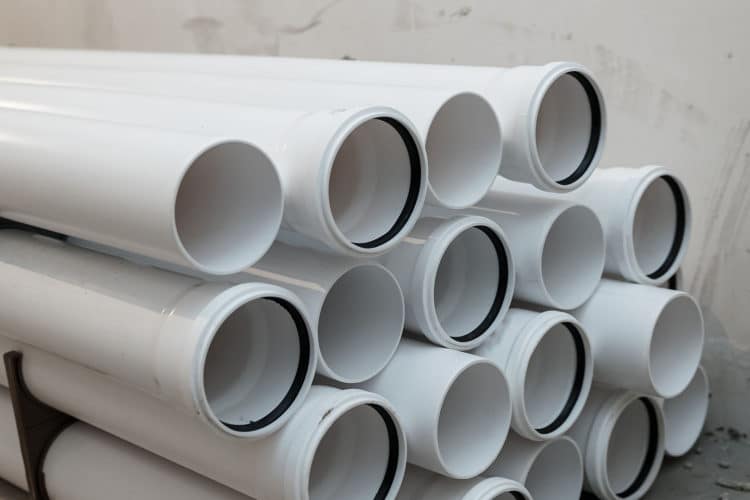PVC dust is explosive, but the risk of this event occurring is relatively low. Companies that produce this material daily have a remarkable absence of reports when working with this substance across drying, packaging, storage, loading, and transport activities.
Since PVC is an organic material, it is flammable. That means there is an explosion risk to consider when handling powder and dust, especially when working on plumbing systems and home-based projects.
The easiest way to prevent a dispersion event is to remove conducting equipment from the environment, ground all tools, and eliminate ignition points.
Exploding PVC Dust Collection Ductwork?
Mixing PVC powder with additives can create blends with explosive properties. It is a combustible substance, which produces a hazard that can lead to property damage and injuries. Static electricity builds up around this product to create ignition when working on dust collection.
PVC comes in two common forms: firm and flexible. Both versions often require cutting to ensure the item is the correct length to fit in the application on which you’re working.
When you purchase PVC products, it’s not unusual to have them a bit dirty, dusty, or smudged. The shipping and handling process from the manufacturer to the retailer often leaves grease and blemishes behind.
Pipes often come with a manufacturer’s imprint that requires removal if you don’t want it seen after the project is complete.
Knowing how to clean PVC pipe before cutting it will reduce combustion risks dramatically because you’re removing flammable agents that get turned into dust.
Once you’ve followed the steps below, you’ll be ready to finish the powder cleanup from your cutting efforts later.
How to Correctly Clean PVC Materials
Before you cut any PVC product, wipe any loose dust off with a damp rag. After it dries, use a powdered cleanser and a nylon scouring pad to dampen and clean the surface.
Use the damp rag to remove the cleaner.
You can use an all-purpose cleaning product with a scouring pad if you prefer, but this option won’t remove ink markings.
Once you reach this step, you’re ready to remove the manufacturer’s imprint. Here are the different methods you can try.
| Imprint Removal Method | How This Imprint Removal Method Works |
| Palm Sander | Fasten the length of pipe in a secure vice or by another safe means. Use 220-grit sandpaper to remove the imprint. Once finished, wipe the area with a damp cloth to clean it. |
| Sanding Pad | Use a medium-grit sanding pad with a fine-grit opposite side to work on the PVC pipe. The product should be flexible enough to conform to the contour while removing the unwanted markings. |
| Acetone | Place a small amount of acetone on 000 steel wool. Begin rubbing in small circles, working in short sections as you work your way down the pipe. It will dry quickly, causing the dye to smear if you don’t get it all at once. Wipe with an old rag before it dries. New steel wool is needed for about every five feet of PVC. |
| Carburetor Cleaner | If your PVC pipe has blue lettering that you want to remove, this cleaning agent will take care of it and some stubborn smudges. You’ll need to follow the manufacturer’s instructions on the container to achieve the best result. |
| Lacquer Thinner | Wipe this product along the length of the pipe where the markings need to be removed. Don’t allow the product to linger on the surface any more than necessary, as it could potentially damage the PVC’s integrity. |
Whenever your efforts create PVC dust, you should wear a proper respirator or dust mask to protect your air passageways. The particulates are dangerous to your health when inhaled.
If you work with acetone, wear an eye shield and heavy-duty rubber gloves to protect yourself while encouraging more ventilation in the working area.
Can I Use PVC Pipe for Dust Collection?
PVC is used for dust collection systems globally. It’s vastly superior to using a broom and a dustpan when trying to clean up a mess.
No known fires have ever been caused by a static discharge originating from PVC pipes in dust collection systems.
It acts as an insulator, so the charge doesn’t travel across it easily. Only a surface in direct contact with the wire would be grounded if you routed that option, which is ultimately pointless since the energy won’t travel from the outside to the inside or in reverse.
The biggest issue with PVC pipe is that it tends to be made with inflexible tubing, requiring the use of standard elbows.
Dust collection systems that go around several corners could end up with clogging problems to manage.
How to Prevent Electrostatic Discharge
The best way to avoid the issue of exploding PVC dust is to eliminate the possibility of electrostatic discharge from the source.
Even small amounts can cause damage or destroy electronics, including levels below human detection.
That’s what removing the possibility of a build-up before the dust enters the collection system can prevent virtually all incidents from occurring.
Most people have experienced a static shock at some point. It operates the same way as a bolt of lightning, but on a smaller scale.
Here are the best ways to avoid having static issues in your shop to prevent combustion, especially when working with a dust collection system.
- Treat all the floors in the shop, especially any rugs or carpets, with an anti-static compound. Try to remove any carpeting whenever possible.
- Install a grounding system that works with low voltage dissipation.
- Keep all electronics away from synthetic materials and plastics to avoid a transfer event.
- All electronic equipment should be kept away from blowing air. This movement increases static accumulation. If you require ventilation for your PVC work, the assemblies should be separate from HVAC system components and fans.
When stopping electrostatic discharge from the body, three elements are necessary to prevent problems.
You’ll need an anti-static floor mat, electrostatic-safe tools, and straps for the wrist and heel while operating tools.
Even in those situations, you may find that some dust goes to places where these safety controls don’t have as much influence.
In those situations, you’d want to ensure grounding wires are available for the pipe as an extra precaution.
Why Is PVC Combustible?
PVC is flammable because it is manufactured with polyvinyl chloride. It’s used in pipes, wiring, and other plastic because it adds strength and durability to the material. That compound contains chlorine atoms that have highly reactive properties with oxygen molecules that can mix when the dust is created.
PVC becomes flammable at a flashpoint of 391°C. It has an auto-ignition point of 454°C. Although an instant static charge can generate those temperatures through dust friction, the odds of it happening are relatively minor.
The bigger risk involves the vaporization of flame-retardant chemicals in PVC after it gets cut.
The vapor is toxic, irritating, and flammable. The pipes also release formaldehyde during that process.
That means the best way to cut PVC is to be in a well-ventilated area while using sharp tools. You can prevent dust accumulation by installing a collection system.
If you decide to use a vacuum, be careful if it has a blower attachment because you could end up blowing the dust throughout the working area.
With enough care and consideration, you can prevent discharges that could create an ignition point.
Combustion is a rare event, especially for those who rarely work with the material, but it is still an issue to keep in mind.

